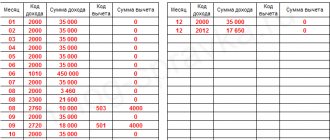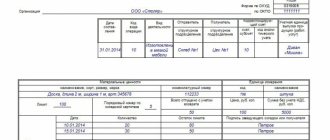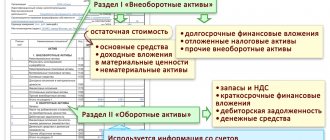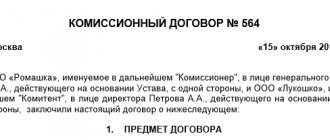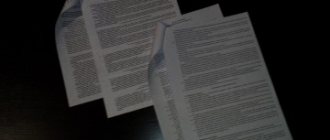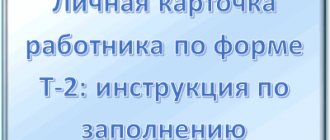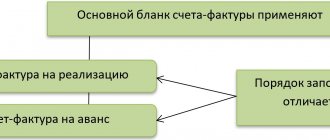Today we have to find out whether in Russia there is any penalty for failure to file a tax return. Should the population be concerned if a person has not reported his or her income? Under what circumstances and what punishment will a citizen face? The answers will be presented below. In reality, everything is not as simple as it seems.
Responsibility of the population
In Russia, all organizations and citizens are required to report their income to the state. This rule is enshrined at the legislative level.
Is there a penalty in the country for failure to file a return? What happens to someone who does not follow the established rules? It all depends on the specific situation.
First, you need to remember: citizens are required to report their income by April 30 of the year following the one in which the profit was received. Taxes are paid before July 15.
What will happen to the taxpayer if the deadlines are missed? Is it always necessary to file tax returns with the relevant authority?
Declaration 3-NDFL for 2020 (download) for income tax in Excel (Excel) and PDF (PDF) format
The declaration on personal income tax (income tax) 3-NDFL for 2020 was approved by Order of the Federal Tax Service of the Russian Federation dated December 24, 2014 No. MMV-7-11/ [email protected] The latest changes to the form were made by Order of the Federal Tax Service of Russia dated October 10, 2016 No. MMV -7-11/ [email protected] Our declaration form is given taking into account all changes. It is used when declaring income for 2017.
Declarations 3 personal income tax for other years in Excel (Excel) and PDF (PDF) format, see the links:
- declaration 3-NDFL for 2020;
- declaration 3-NDFL for 2020;
- declaration 3-NDFL for 2014;
- declaration 3-NDFL for 2013;
- declaration 3-NDFL for 2012;
- Declaration 3-NDFL for 2011.
The 3-NDFL declaration for 2020 must be sent to the tax office no later than April 30, 2020 - Monday. For information on in what cases you must submit a 3-NDFL declaration, how to fill it out, register it and send it to the tax office, see the link.
Our website contains the current personal income tax declaration form 3, taking into account all changes (see attached files at the BOTTOM of this page):
- file - 3_ndfl_2017_pdf - editable form in PDF format;
- file - 3_ndfl_2017_excel - editable form in Excel format.
Both files are in RAR archive. You can easily download the 3-NDFL declaration for 2020 to your computer. Personal income tax declaration form 3 is given in Excel and PDF format. By downloading and unzipping the 3rd personal income tax declaration for 2020, you can fill it out yourself: either directly on the computer, or by hand printing out the necessary sheets.
Exceptional cases
Some believe that in some cases there is no need to report your income to the state. More precisely, part of the population believes that if there is no need to pay tax on a particular profit, there is no need to declare it.
Actually this is not true. Even if a citizen has received tax-free profit, it must be reported. Otherwise, the person will face certain punishment. Which one exactly?
Problems with the tax authorities
As already said, it all depends on the specific situation. To begin with, it should be noted that concealment of income is a criminal offense. In certain cases, a citizen may face not only a fine, but also imprisonment. But this is only if the taxpayer evades taxes.
Failure to file or untimely reporting of profits received is a completely different matter. It is difficult to call such a step a criminal offense. Especially if it was made by mistake and one-time. What fine does a person face for failure to submit a return?
The first thing a taxpayer must understand is that missing reporting entails problems when contacting the tax authorities. A citizen may be refused to issue tax certificates. Also, a person will not be able to apply for a tax deduction.
Penalty for “zeros”
What is the penalty for failure to submit a declaration by an individual? Let's consider the option when a citizen or organization did not have to pay tax. This is possible if the company's expenses exceed its income. Also, personal income tax is not paid on profits received from the sale of property owned for more than 3 (from 2016 more than 5) years.
However, this does not mean that there is no need to report income. The so-called “zero tax returns” (zero tax returns) are subject to exactly the same rules as all other reporting.
What threatens the taxpayer? Fine. For failure to submit a declaration on time, you must pay 1000 rubles. And nothing more. This is exactly the punishment that awaits the negligent taxpayer.
In what cases do you need to fill out the 3rd personal income tax declaration?
3 Personal income tax must be filled out by lawyers, individual entrepreneurs, notaries, and in some cases, individuals. The main income of individuals is recorded in the 2nd personal income tax declaration, and the additional income should be displayed in the 3rd personal income tax if the taxpayer:
- sold real estate or other property that was owned for less than the minimum period of ownership;
- received money from securities transactions;
- received income from renting out real estate;
- accepted money or property through a gift agreement from individuals who are not close relatives;
- received dividends;
- earned money in other ways (selling maternity capital, winning a lottery);
- received income from sources located outside the Russian Federation.
Another reason for an individual to fill out a declaration is the need to obtain a tax deduction. This is an amount that can reduce your tax base. Another definition is a refund of part of the tax. Tax deductions are divided into several groups:
- standard;
- social;
- property;
- professional.
The most common cases when an individual may be entitled to a tax deduction are the purchase of real estate or property, expensive treatment, or education.
To return part of the tax, you must provide documents confirming the right to deduct. For example, in the case of treatment, you need to save contracts with medical institutions and receipts for medications. In the case of buying a car - a purchase and sale agreement and a certificate from the traffic police. In the case of mortgage payments - receipts for payment of bank debt. If we consider the situation with training, you need to attach a certificate from the university to the declaration.
There is a tax
But that is not all. The thing is that most often the population is faced with ordinary tax returns. They provide for the payment of a certain tax by one or another citizen. If a person has not filed 3-NDFL, which provides for tax payments, he will face a more serious penalty.
Let's start from the very beginning. Let's assume that there is still a long time before the tax deadline. The taxpayer did not file the return by April 30. Starting May 1, the taxpayer will be assessed a fine. Which one?
1000 rubles? Not at all. The penalty for failure to file a tax return for an individual or individual entrepreneur will vary. For each month of delay, 5% of the tax is charged. In this case, the maximum penalty cannot exceed 30% of the tax payment.
How to fill out the 3-NDFL declaration in the program - instructions for filling it out
To receive tax deductions (purchase of an apartment, treatment, education) and declare your income, you need to submit and fill out a personal income tax return. Now this does not require special knowledge and experience, there is no need to look for a specialist or pay money. It is enough to simply enter the data into it. At the same time she:
- calculates tax amounts and deductions automatically,
- helps the taxpayer not to make mistakes when filling it out,
- frees you from filling out the same information manually,
- allows you to print the finished form on a printer.
After downloading the software, without any activation or connections, you can start declaring. This article provides detailed instructions for filling out the 3-personal income tax declaration in the 2020 declaration program.
Video instructions on how to download, install and use the program:
When you start the program, a sheet automatically appears in the “Set Conditions” mode
When creating a declaration, you should fill out all the blocks and columns of the sheet from top to bottom. That is, as such, a filling sample is not needed. It is enough to follow the algorithm of actions.
Block “Declaration type”
Activate the element (put a dot in the position) “3-NDFL” (see position No. 1). Typically this item is enabled by default.
Block "General information"
In the “Inspection Number” line, click the selection button and determine the territorial inspection that serves your registration address (a list will appear, in it you should select the desired Federal Tax Service/Moscow Tax Inspectorate) (position No. 2);
In the “Adjustment number” line, you should put the number that corresponds to the number of previously filed returns for a given tax year. If a declaration has not been submitted previously, then “0” is entered;
OKTMO enter the code of your locality, which can be found in your tax office or determined on the Federal Tax Service website, to do this, follow the link, enter your address, digital code in the “Municipal entity:” field and there is OKTMO (position No. 3).
Block “Taxpayer Attribute”
Select the position “Other individual” (No. 4).
Block “Income available”
Check the box “Taking into account certificates of income of an individual...” (No. 5), the remaining points do not need to be used.
Block “Reliability Confirmed”
Accept the element “Personally” (No. 6).
Next, select the sheet “Information about the declarant” (click on the button)
Block "F.I.O."
It contains the surname, first name, patronymic - fill in as indicated in the passport of a citizen of the Russian Federation (No. 7). Information about the date and place of birth is entered in the same way (No. 9). TIN line indicate your own taxpayer identification number (No. 8). Information about your TIN, if you do not know it, can be found through the tax service.
Block “Citizenship Data”
It is offered automatically; if the line is empty, then code 643 is entered, which corresponds to Russian citizenship (No. 10).
Block “Information about the identity document”
In the “Type of document” line, select position 21 – Passport of a citizen of the Russian Federation (No. 11), the remaining lines are filled in as in the passport (No. 12).
Block “Contact phone number”
Here you need to indicate your phone number, which will be accessible and it will be easy to contact you to resolve technical and other important issues. Fill in with regular numbers. The first one is “8” (No. 13).
Then the sheet “Income received in the Russian Federation” is activated
We are interested in the “13 ” tab; we need to select the yellow position (number) (No. 14).
In the “Payment source” block
You need to click on the top “green plus”.
A window with the same name “Payment Source” will appear. It contains information about the employer (position 16). Data is entered according to the available lines in the window. This data can be obtained from the 2-NDFL certificate, which is received from the employer on paper or electronically through the Federal Tax Service website (after registering in the taxpayer’s personal account);
If there are several employers, then a separate window opens for each by repeatedly clicking on the “plus” (No. 14). Depending on which employer applied the standard deduction for children in that box, check the box “Calculate standard deductions using this source” (No. 17). You can only tick one employer;
Completing the window formation by starting with the “Yes” button (No. 18). That is, each window closes separately. Then, accordingly, another one is opened (for another employer), etc.
Block “Month income...Income code...”
By clicking on the “green plus” on the left, the “Income Information” window (No. 19) will pop up. Immediately click on the “Income Code” line button and the “Directory of Income Types” list will appear (position No. 20). From this list, select the desired code - our appropriate line, click. Enter the amount manually (No. 21). Indicate the number of the corresponding month (No. 22). When the information about a specific month is completed, click the “Yes” button (No. 23). All data should be taken from the 2-NDFL certificate. A separate window is filled in for each amount (click on the green plus each time) (No. 19).
Block “Total amounts by payment source”
The line “Total amount of income” is displayed automatically.
The line “Tax amount withheld” is entered manually (No. 28). It is usually equal to the result obtained by multiplying the Amount of Income by 13%. But if there were tax deductions applied by the employer, then you need to additionally fill out another box just below.
Block “Standard, social and property deductions presented by a tax agent”
Click the “Green plus sign” and the “Deductions specified in section 3 of the 2-NDFL certificate” window will appear (24).
Select the line “Deduction code” from the list, depending on the type of deduction and life situation (No. 25);
The deduction amount must correspond to the 2-NDFL certificate. Moreover, for each deduction the total annual amount is taken, and not monthly (No. 26).
There is a separate window for each deduction. Once completed, click “Yes” (No. 27).
Go to the “Deductions” sheet
On this sheet, the taxpayer has options for the development of events. And they are related to the choice of a specific deduction. There are 4 types of deductions in total, but three are in demand:
- Property;
- Social;
- Standard.
By the way, you can take into account all deductions in one declaration, so to speak in one filling session. To do this, in each deductible section, immediately under the section tab (top of the sheet to the left), put a checkmark in the “Provide ......” position.
Since most of the questions concern exactly how to correctly fill out a declaration for the return of a property tax deduction, let’s go over this deduction section. Let’s take for example the most common life case (when getting a refund from the budget when buying an apartment)
Go to the “Property” tab (No. 29)
Immediately check the box “Submit property tax deduction” (see No. 30). What was discussed a little higher;
Activate the “Object Information” block
Click on “Green Plus” (No. 31) and the “Object Data” window pops up;
At the top of the window (No. 32),
In the line “Name of object” from the list of types of real estate we find the item apartment (No. 33);
Next, you are interested in the line “Taxpayer Characteristics”. Based on your life situation, you need to make a choice. Everything is obvious there; the declarant, as the applicant for the deduction, determines his status. There will be no difficulties (No. 34);
“Object number code.” In the vast majority of cases, we are talking about the cadastral number, select this position (No. 35);
“Object number” Here, in fact, the cadastral number itself is indicated exactly as it is indicated in the extract from the state register (No. 36);
"Location". We are talking about the same property, its address is exactly the same as written in the extract from the state register (No. 37);
“Date of property registration...”. Again, we enter the exact date, copying it from the Rosreestr state register extract. This date is also indicated in the registrar’s stamp on the agreement; it does not coincide with the date of conclusion of the agreement (No. 38);
“Share” is entered automatically by the program (No. 39);
“Cost of the object (share).” This indicator is indicated in the contract and confirmed by payment documents. In this case, there is no need to reduce the size in proportion to the size of your share (if shared ownership) (position No. 40).
"Interest on loans for all years." Indicate data on interest paid in general (No. 41)
If you are a pensioner, then you need to check the “I am a pensioner” box.
At this point the window will be completely filled, click “Yes” (No. 42).
If there are several objects for which compensation is made. For example, if a deduction has already been applied to another apartment, then you need to enter data about this object as well. So that you can further adjust the data for calculating deductions for previous periods.
Block “Calculation of property deduction”
In the fields “Total cost of all objects” and “Interest on loans for all years” the program will independently enter the required values, taking into account restrictions by law (No. 43).
But in the “deduction for previous years” field, both for the object and for the loan, you need to enter the values manually. Naturally, you need to enter data about the amounts actually confirmed and received for past declarations. The amount that was actually withheld by the employer is also taken into account.
For reference: A paper declaration is more difficult to fill out. So the line “Deduction for previous years” requires entering additional data. If this is the first deduction declaration, then “0” is entered; if this is a subsequent declaration, then the amount of the due deduction for the previous year is indicated (that is, the indicator that appeared in the previous declaration in sheet D1, lines 2.7. or 2.8). When there are more than two declarations for previous periods, then the line indicator is 2.7 or 2.8. all declarations add up).
The line “Amount transferred from the previous period” if the declaration is primary, the value “0” is entered, if a subsequent declaration is filled out (to receive the remainder of the deduction), then the deduction received ( accrued) in the previous tax period (this amount is indicated in the previous declaration in sheet D1 in line 2.10), the resulting difference is entered into the “Amount transferred from the previous period” and so on with a cumulative total for subsequent years
The final stage
Click the “Check” button
If there are blank data or incorrect values (for some fields, for example, TIN), the program will offer to correct the inaccuracies (No. 44).
"Save"
Save the completed result by clicking “Save” (No. 45).
Be sure to display the results obtained in a visual format.
Click “View (No. 46)”. We will see the declaration in the form it is filled out on the form. That is, this is your example of filling out before printing. You need to read it carefully, check the data again, etc.
"Seal"
With this button, everything filled out in the required format will be printed on paper (No. 47).
Tax avoidance
What fine for failure to file a return faces those who not only failed to report income, but also failed to pay tax? After July 15, the nature of the punishment will change slightly. The point is that in this case the taxpayer will fall under the article “Tax Evasion”.
What is provided for such punishment? The person will have to pay a fine of 20% of the debt to the state.
Important: such a penalty is provided only when the tax authorities themselves discover a violation. If the taxpayer came to his senses, filed a return and covered the penalties, there is no penalty.
Intent
The peculiarities for taxpayers do not end there. The penalty for failure to file an income tax return along with intentional tax evasion increases. If the tax authorities can prove intent in the actions of the taxpayer, then the monetary penalty will increase from 20% to 40%.
In practice, such situations are extremely rare. After all, proving intentional tax evasion is very problematic. Therefore, often in the absence of a tax return and in the presence of unpaid tax, it is necessary to focus on a fine of 20% of the debt.
“Declaration 2018” program
to fill out the 3-NDFL declaration for 2018
Program “Declaration 2018”, version 1.2.2 dated 08/16/2019.
(download a free program for filling out (preparing) a tax return in 2019 in form 3-NDFL for 2020):
1) InsD2018.msi – installation file
2) Installation instructions (install)
3) Abstract to the program (readme)
About the “Declaration 2018” program
GNIVTS Federal Tax Service of Russia annually develops and offers free programs for filling out (preparing) the 3-NDFL declaration.
The “Declaration 2018” program is designed for automated completion (preparation) of personal income tax returns in 2020 (form 3-NDFL and form 4-NDFL) for 2020.
You can also find and download the program distribution kit for free on the website https://www.gnivc.ru/software/fnspo/ndfl_3_4/.
The “Declaration 2018” program will help you fill out tax return forms for personal income tax (form 3-NDFL and 4-NDFL) for 2020.
1. Introduction
The “Declaration 2018” program is designed to ensure automated completion of tax returns for personal income tax for 2020.
Program functionality:
- entering input information from taxpayer documents;
- calculation of derivative (final) declaration indicators;
- arithmetic control of tax return data;
- checking the correctness of calculation of benefits and tax deductions;
- checking the correctness of calculation of the tax base and tax amount;
- generation of an XML file with Declaration data;
- generation of completed forms with Declaration data and barcode;
New versions of the program are distributed via the Internet and posted on the website of the Federal Tax Service of Russia.
2. Computer and software requirements
Minimum hardware requirements:
- 14.5 MB of free disk space.
- Microsoft Mouse or compatible.
- Printer (or virtual printer)
Windows operating system and other software:
Operating system Windows 7, Windows 8, Windows 10 (with Russian regional settings).
Work on Windows Vista and Windows XP (SP3) is possible, but technical support for these operating systems is not provided.
The program automatically generates 3-NDFL declaration sheets based on the data entered by the user:
- for all taxable income received from sources in the Russian Federation and received from sources outside the Russian Federation;
- on income from business activities and private practice;
- data for calculating professional tax deductions for royalties and civil contracts;
- property tax deductions;
- data for calculating the tax base for transactions with securities, financial instruments of futures transactions and taxable income from participation in investment partnerships;
- for calculating standard, social and investment tax deductions.
Penalty
The penalties for unscrupulous taxpayers do not end with the penalties listed above. The penalty for failure to file a return is already known. It is also clear how much a citizen will have to pay if he has not settled his tax debts before the deadline established in Russia.
Please note that if the tax is overdue, you will have to pay additional penalties. The longer a taxpayer evades his obligations, the more he will ultimately be required to pay.
Currently, a penalty is charged in the amount of 1/300 of the Central Bank refinancing rate. This punishment increases daily. Therefore, it is difficult to say exactly what fine you need to pay for failure to file a return and not pay taxes. Sometimes you can get by with 20% of the tax fee, sometimes more.
Criminal offense
As already stated, tax evasion is a criminal offense. The greater the debt, the more serious the punishment.
What threatens a person who has a debt of more than 600,000 rubles? In this situation, the exact amount of debt will play a role. If the debt has the status of a large one, you may be faced with the following measures to suppress repeated violations:
- fine from 100 to 300 thousand rubles;
- a fine in the amount of a citizen’s salary for 1-2 years;
- forced labor for 12 months;
- arrest for up to six months;
- imprisonment for a maximum of 12 months.
Tax debts in especially large amounts provide for more severe punishment. In this case, the taxpayer faces:
- fine 200-500 thousand;
- collection of wages for 1.5-3 years;
- forced labor for 36 months;
- imprisonment for a maximum of 3 years.
A large debt is considered to be a debt for the last 3 years in the amount of 900,000 thousand rubles (if the tax share is more than 10% of fees) or 2,000,000 rubles per year. A particularly large amount of debt is 4,500,000 rubles for 3 years (if the tax debt exceeds 20% of the fees payable), or 13,500,000 rubles.
Legislators will change the form starting in 2021
The Federal Tax Service published order No. ED-7-11/ [email protected] , which changed the rules and sample for filling out 3-NDFL based on the results of 2020. This means that the report for the current year will have to be filled out in a new way; the order comes into force on 01/01/2021.
IMPORTANT!
For reporting for 2020, use the new form!
Main changes in the 3-NDFL declaration:
- the field “Registered under No.” has been removed from the title page of the form;
- Section 1 “Information on the amounts of tax subject to payment (addition) to the budget / refund from the budget” is divided into two paragraphs: in the first, taxpayers indicate information on the amounts of tax subject to payment (addition) to the budget (except for amounts of tax paid in accordance with from clause 7 of Article 227 of the Tax Code of the Russian Federation) or return from the budget; in the second - information about the advance payment paid in accordance with clause 7 of Article 227 of the Tax Code of the Russian Federation;
- an appendix to Section 1 “Application for offset (refund) of the amount of overpaid personal income tax” was introduced;
- a separate calculation sheet has been added to Appendix 3 “Calculation of advance payments paid in accordance with clause 7 of Article 227 of the Tax Code of the Russian Federation”.
IMPORTANT!
They will change the barcodes on all pages, which is why the old form will no longer be accepted. From 2021, the declaration will have to be filled out from scratch.
Last year, the rules for numbering adjustments changed. The new wording sounds like this: continuous numbering is provided, where the “adjustment number” for the primary declaration takes the value “0—”; for updated declarations, the number is indicated sequentially (“1—”, “2—”, “3—” and so on). It is not allowed to fill out an adjustment number for an updated declaration without a previously accepted primary declaration.

